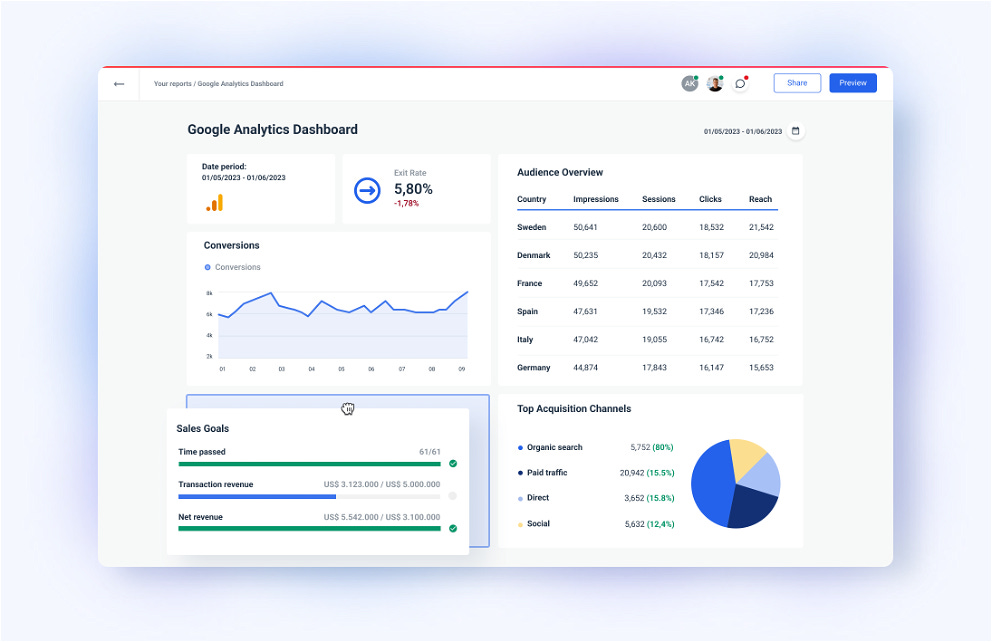Reusable React Code Modules, Part 10 - Analytics and SEO
Optimizing Performance: Building Reusable Modules for Analytics and SEO
Analytics and SEO are essential for understanding user behavior, improving site performance, and optimizing search engine visibility. This guide covers how to structure reusable analytics and SEO modules in React. We will explore common libraries, compare their features, and provide practical examples and code snippets.
Common Libraries and Tools
1. Google Analytics
Google Analytics is a widely-used service for tracking and reporting website traffic
Key Features
Real-time analytics
Custom dimensions and metrics
Event tracking
Integration with other Google services
2. Segment
Segment is a customer data platform that simplifies the process of collecting and integrating analytics data
Key Features
Centralized data collection
Integration with multiple analytics tools
User and event tracking
Data enrichment
3. React Helmet
React Helmet is a library for managing changes to the document head, useful for SEO
Key Features
Dynamic document head management
Nested components
Server-side rendering support
Declarative API
4. Next.js
Next.js is a React framework that provides server-side rendering and static site generation, enhancing SEO
Key Features
Server-side rendering
Static site generation
API routes
Built-in CSS and image optimization
Comparison
Google Analytics: Best for comprehensive analytics with deep insights and integrations with Google services
Segment: Ideal for centralized data collection and integration with multiple analytics tools
React Helmet: Suitable for managing document head changes to enhance SEO
Next.js: Best for server-side rendering and static site generation, improving performance and SEO
Examples
Example 1: Google Analytics
Setup:
// gtag.js
export const GA_TRACKING_ID = 'YOUR_GA_TRACKING_ID';
export const pageview = (url) => {
window.gtag('config', GA_TRACKING_ID, {
page_path: url,
});
};
export const event = ({ action, category, label, value }) => {
window.gtag('event', action, {
event_category: category,
event_label: label,
value: value,
});
};Usage:
import React, { useEffect } from 'react';
import { useRouter } from 'next/router';
import * as gtag from '../lib/gtag';
const MyApp = ({ Component, pageProps }) => {
const router = useRouter();
useEffect(() => {
const handleRouteChange = (url) => {
gtag.pageview(url);
};
router.events.on('routeChangeComplete', handleRouteChange);
return () => {
router.events.off('routeChangeComplete', handleRouteChange);
};
}, [router.events]);
return <Component {...pageProps} />;
};
export default MyApp;Example 2: Segment
Setup:
// segment.js
import analytics from 'analytics';
import segmentPlugin from '@analytics/segment';
const analyticsInstance = analytics({
app: 'my-app',
plugins: [
segmentPlugin({
writeKey: 'YOUR_SEGMENT_WRITE_KEY',
}),
],
});
export default analyticsInstance;Usage:
import React, { useEffect } from 'react';
import analytics from './segment';
const MyComponent = () => {
useEffect(() => {
analytics.page();
analytics.track('Component Mounted', {
category: 'User Actions',
label: 'MyComponent',
});
}, []);
return <div>My Component</div>;
};
export default MyComponent;Example 3: React Helmet
Setup:
// HelmetSetup.js
import { Helmet } from 'react-helmet';
const HelmetSetup = ({ title, description, keywords }) => (
<Helmet>
<title>{title}</title>
<meta name="description" content={description} />
<meta name="keywords" content={keywords} />
</Helmet>
);
export default HelmetSetup;Usage:
import React from 'react';
import HelmetSetup from './HelmetSetup';
const HomePage = () => (
<div>
<HelmetSetup title="Home Page" description="This is the home page" keywords="home, react, seo" />
<h1>Home Page</h1>
</div>
);
export default HomePage;Example 4: Next.js
Setup:
// next.config.js
module.exports = {
reactStrictMode: true,
poweredByHeader: false,
};Usage:
// pages/index.js
import Head from 'next/head';
const Home = () => (
<div>
<Head>
<title>Home Page</title>
<meta name="description" content="This is the home page" />
</Head>
<h1>Home Page</h1>
</div>
);
export default Home;












